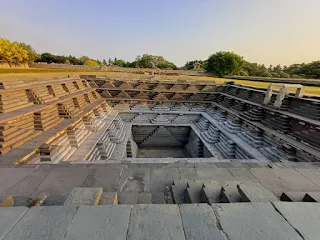Mahābhāṣya: The Great Commentary of Patanjali
The Mahābhāṣya, or "Great Commentary," is one of the most revered works in the history of Indian linguistics and Sanskrit grammar. Composed by the sage Patañjali in the 2nd century BCE, it is a masterful exposition on select portions of the Aṣṭādhyāyī, the grammatical treatise of the earlier scholar Pāṇini. Along with the works of Pāṇini and Kātyāyana, the Mahābhāṣya forms the foundational trinity of Sanskrit grammar, deeply influencing not only the study of language but also the methods of logic, philosophy, and epistemology in Indian tradition.
The Mahābhāṣya was written in a period when the tradition of oral transmission and memorization was thriving. Scholars and grammarians sought to preserve and perfect the sacred language of Sanskrit, which was used in the Vedas, rituals, and classical literature. Pāṇini's Aṣṭādhyāyī, a terse and highly technical work, had already systematized Sanskrit grammar using about 4,000 sūtras or aphorisms. Kātyāyana had subsequently composed Vārttikas—brief critical notes or supplementary observations on Pāṇini’s work.
Patañjali’s Mahābhāṣya arose as a brilliant commentary on these systems, particularly focusing on Pāṇini's sūtras in the first four chapters of the Aṣṭādhyāyī and incorporating Kātyāyana’s Vārttikas. However, it was much more than a commentary—it was a philosophical and linguistic discourse.
Structure and Scope
The Mahābhāṣya is organized around the Pāṇinian sūtras, which it discusses in depth. The work is divided into eighty-five sections (āhnikas), which were designed for daily study. It covers approximately 1,228 of Pāṇini’s sūtras, focusing particularly on the rules concerning phonetics (śikṣā), morphology (vyākaraṇa), and semantics.
Patañjali’s commentary is not a mere explanation of grammatical rules. It also engages in dialectical reasoning, anticipates counter-arguments, and explores alternative interpretations. The text abounds in examples, counterexamples, analogies, and discussions that bridge grammar with logic (nyāya) and metaphysics.
One of the great contributions of the Mahābhāṣya is its sophisticated theory of language and meaning. Patañjali considers grammar not just as a mechanical system but as a tool for correct speech and communication. He asserts that the purpose of grammar is to preserve the purity of language and to ensure the correct transmission of sacred knowledge.
Sphoṭa Theory (Glimpse of Meaning): While not developed fully by Patañjali, the idea of sphoṭa—the indivisible sound unit carrying meaning—is hinted at. This would later be elaborated by Bhartṛhari in the Vākyapadīya.
Function of Words and Sentences: Patañjali discusses how meaning arises not merely from individual words, but from their structured usage in a sentence (vākyārtha), pointing toward early semantic theories.
Correct Usage (Sādhu-prayoga): The emphasis on correct usage links grammar with ethics and ritual purity, underlining the sacred responsibility of a grammarian.
Pramāṇa (Means of Knowledge): The Mahābhāṣya occasionally engages with epistemological issues, particularly when establishing the validity of grammatical rules.
Patañjali: The Grammarian and Philosopher
Patañjali, the author of the Mahābhāṣya, is often identified as a polymath. While some traditions conflate him with the author of the Yoga Sūtras, it is more likely that the grammarian and the yogic philosopher were different individuals. The Patañjali of the Mahābhāṣya was a sharp logician, an acute observer of language, and a thinker who revered the Vedic tradition.
His use of lively examples—often taken from everyday life—and his subtle humor make the Mahābhāṣya both intellectually profound and accessible in parts. He addresses scholars, students, and critics alike, defending the relevance and necessity of grammatical precision.
The Mahābhāṣya became a cornerstone for later grammatical works and commentaries. Scholars such as Bhartṛhari, Kaiyaṭa, and Nāgeśa Bhaṭṭa engaged with it extensively. In fact, most classical Sanskrit grammar taught in traditional schools (paṭhaśālās) even today owes its roots to the Mahābhāṣya tradition.
Moreover, its dialectical method influenced other fields like Nyāya (logic), Mīmāṃsā (ritual exegesis), and even early Buddhist scholasticism. The Indian approach to linguistics, exemplified by Patañjali, has been compared to the modern scientific method in its rigor and clarity.
The Mahābhāṣya is far more than a grammatical treatise—it is a window into the intellectual, philosophical, and spiritual world of ancient India. It reflects a culture that saw language not merely as a tool for communication, but as a sacred medium capable of preserving dharma, transmitting truth, and elevating the mind.
Patañjali’s genius lies in his ability to blend precision with philosophy, clarity with depth, and tradition with innovation. The Mahābhāṣya remains an enduring monument to human intellect and a testament to the Indian civilization’s deep engagement with the nature of language, knowledge, and meaning.
Quote:
śabdo 'py ayaṁ samartho draṣṭum arthaṁ pratyakṣavat
(under Paspasa Ahnika)
"Even a word, when properly used, reveals meaning as clearly as direct perception."
This emphasizes the power of language and grammar to convey truth with precision, akin to what is seen with the eyes.
Quote:
na hi śabdānām abādhitam kiñcit pravartate
(under discussion on śabdapramāṇa)
"Nothing operates without being regulated by words."
This shows the authority of language in organizing knowledge, behavior, and dharma.
Quote:
mahimā khalu śabdānām, yayā gāvo 'pi badhyante
(under Ahnika I)
"Such is the power of words that even cows are controlled by them."
Patañjali humorously points to the fact that even animals respond to sound or command, showing the influence of speech.
Quote:
śāstreṇa vinā na kaścit kuryāt kiñcit
(from introductory sections)
"Without the guidance of the śāstra (science or grammar), no one should attempt anything."
This underscores the importance of discipline and structure in knowledge.
Quote:
lokasya sarvasya laukikānām vyavahārāṇāṁ śabdā eva pramāṇam
(under discussions of śabda-pramāṇa)
"For all worldly activities and common life, words alone are the primary means of knowledge."
Here, Patañjali asserts that language is central not just in Vedic rituals but in all social and intellectual life.




